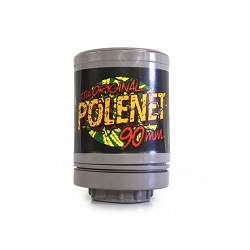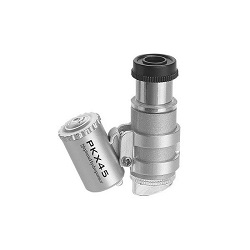There is a lot of talk about trichomes during the cultivation phase of cannabis, but do you really know what they are?
These small organs, invisible to the naked eye, are of vital importance to the Canapa Sativa L. plant and flowers because they are fundamental in the production of cannabinoids and terpenes, the chemical compounds that give cannabis varieties their unique properties.
Understanding when trichomes are mature is essential to maximize the potency and quality of your harvest.

But what exactly are trichomes, where are they located, and what role do they play in the marijuana plant? In this guide, we will explore these and other questions in detail, offering clarity on this often-debated topic.
We will also provide practical advice on how to evaluate the maturation of cannabis and help you understand the optimal time for harvesting your plants.
Table of Contents
- What are cannabis trichomes?
- How long do trichomes take to mature: development stages
- How to tell when trichomes are ready
- How to observe trichomes?
- What can you do with plant trichomes
Before proceeding, also read: “Cannabis harvesting and drying”.
What are cannabis trichomes?
Trichomes in cannabis plants are microscopic structures that develop on the surface of leaves, flowers, and buds.
The word derives from the Greek "Tríchoma" and is roughly synonymous with “hair” or “hair growth”. When you observe a flowering marijuana plant (around the third or fourth week), you can notice a thin frost covering the leaves.
Using a magnifying glass, you can closely observe the presence of numerous trichomes that resemble tiny stalks with heads similar to tiny mushrooms, which is why they are often confused with pistils.
These small organs are essential for the plant and play a crucial role in the production of cannabinoids, terpenes, and flavonoids that give cannabis varieties their unique characteristics.
Trichomes can take on different forms, but three types are most characteristic of cannabis plants:
- Bulbous: very small and found all over the plant’s surface, including stems, branches, leaves, and flowers. Difficult to spot even under a microscope, they range in size from 10 to 15 micrometers;
- Sessile: slightly larger than bulbous ones, they have a stem and a head, similar to small mushrooms. Easily identifiable with a magnifying glass;
- Capitate stalked: the largest type, visible when closely examining the flowers with a magnifying glass. They develop as stems composed of epidermal and hypodermal cells, accumulating to form a large glandular head. This head, encased in a waxy cuticle layer, is the center of cannabinoid and terpene synthesis.

Hashmaker Polenet 130 micron
Hashmaker Polenet XL 90mm with 130 micron screen. This tool is designed to produce hashish with dry extraction

In fact, although all three types produce cannabinoids, it is the latter variety that attracts the most attention from cannabis enthusiasts because at full maturity it contains the highest concentration of CBD and THC.
Trichomes, what function do they serve?
Besides serving a protective function against fungi, insects, and pests, they also act as a protective barrier against atmospheric agents (e.g., wind, snow, and frost) and UV rays from the sun.
Additionally, they produce a very dense, sticky, and highly aromatic resin due to the richness of terpenes, which not only act as repellents for pests and predators but also attract beneficial insects.
How long do trichomes take to mature: development stages
The time required for maturation varies depending on the cannabis variety, growing conditions, and other environmental factors. However, it is possible to outline the general stages of trichome development during the cannabis plant’s life cycle.

Choose the best feminized and autoflowering cannabis seeds
- Initial Stage: during the first weeks of vegetative growth, trichomes begin to form on the plant’s leaves, flowers, and buds. But in this stage, they are hardly detectable and contain few cannabinoids and terpenes;
- Growth Stage: as the vegetative stage progresses and flowering begins, trichomes continue to develop and mature, becoming more visible and distinguishable under a microscope;
- Maturation Stage: around the third and fourth week of flowering, trichomes reach maximum maturity, visibility, and cannabinoid concentration.
It is important to note that the duration of each stage may vary depending on the plant’s genetics, growing conditions, temperature, humidity, and other environmental factors.
Carefully monitoring trichome development and observing their color changes is essential to determine the optimal harvest time.

How to tell when trichomes are ready
One of the most common questions among growers regarding trichomes is when the optimal time for harvesting the inflorescences is. To determine when they are ready for harvest, it is essential to recognize the signs of maturity.
The color of the trichomes is perhaps the most evident aspect that will allow you to determine the optimal harvest time, the moment when the plant has reached its peak potency and quality.
Here’s what to look for:
- Transparent trichomes: in the early stages of development, the plant is not yet ready for harvest;
- Milky trichomes: as maturation progresses, the color becomes whitish and opaque, and cannabinoids start to be produced. This stage indicates moderate potency and an effect that is mainly energetic and cerebral;
- Amber trichomes: these are a sign of late flowering and complete maturation. At this stage, the plant produces the maximum amount of cannabinoids (CBD), while THC levels are lower. This is the ideal time for flower harvest if a more relaxing and sedative effect is desired;
- Mixed trichomes: a combination of milky and amber indicates a specific flowering period and represents the ideal harvest time. At this stage, cannabis offers a balanced effect, with high levels of THC and a moderate presence of CBD.
Besides color, also observe the shape and texture. Mature trichomes tend to have a full, globular shape, while immature ones may be smaller and more fragile. Mature ones are also generally sticky to the touch, thanks to the rich resin production.
Trichomes are also the signal of maturation for autoflowering strains. Even for this rapidly flowering variety, it is advisable to harvest the buds when the trichomes are a cloudy brown color.

How to observe trichomes?
If you are new to cannabis cultivation, you might wonder how to observe trichomes in more detail. Observing these microscopic organs closely requires specific tools.
- Jeweler’s Loupes
Very useful tools for observing and magnifying trichomes. It is advisable to choose loupes with an integrated light, which makes the image clearer and sharper. Using these loupes with your smartphone camera, you can monitor the maturation phase during flowering;
- Microscope
An ideal tool for observing trichomes in detail. Using a microscope, you can magnify these tiny organs to better view them and also take pictures and analyze them later on a computer;
- Macro lenses
These accessories enhance the magnification capability of smartphone cameras. Simply attach these devices to the side of the phone, positioning them over the rear lens to capture close-up and detailed images of cannabis flowers and trichomes.
With the naked eye, you might only notice the crystalline resin that makes light cannabis inflorescences shine. What you can see through a microscope will be even more fascinating.

Plant Microscope 45x
Plant microscope with 45X lens by Neptune Hydroponics is one of the smallest and most compact portable magnification devices available on the market
What can you do with plant trichomes
When to harvest cannabis plants? The decision depends on the grower’s personal preferences and the desired effects. However, it is generally advisable to harvest the plants when most trichomes are in the amber phase, indicating more pronounced potency and effect.
But what can we do with trichomes once they are harvested? The possibilities are endless, especially when it comes to cannabis extracts. Trichomes, in fact, are the foundation of every incredibly potent concentrate.
The extraction method changes, but the resin from the trichomes remains the beating heart of these products. Concentrates have the great advantage of having virtually unlimited shelf life, maintaining their properties for a long time.
The spread of dabbing among new generation smokers and the increasing legalization of therapeutic CBD products confirm that trichomes are becoming increasingly central in cannabis culture.
Knowledge of trichomes is opening doors to a wide range of possibilities, from cannabis culinary recipes to concentrates, from medical tinctures to new and extraordinary therapeutic options yet to be explored.

Choose the best resin extraction products
Trichomes are the key to unlocking the full potential of cannabis, offering a world of discoveries and innovations yet to be explored.
To ensure successful cultivation and quality harvest, it is important to use the right accessories. At Grow Shop Italia, you will find a wide range of products for plant and trichome care, including appropriate tools for trichome analysis. Explore our selection of accessories and get everything you need for successful cultivation.